Choosing the right stuff in which to grow your seedlings determines the quality of the cannabis you’ll be harvesting. Knowing the differences between different organic mediums and nutrient additives can help strengthen your ability to create craft-quality organic marijuana buds.
Strictly Roots
When selecting the right organic grow mediums, you should not only consider NPK (nitrogen, phosphorus and potassium) ratios, but also the medium’s ability to retain water. Plus the ability to provide enough aeration to allow proper capillary action between dry and wet periods. Below is a list of all the various growing mediums that can be purchased from any grow site, along with top tips so that you can customize your organic cannabis grow medium.
Soil
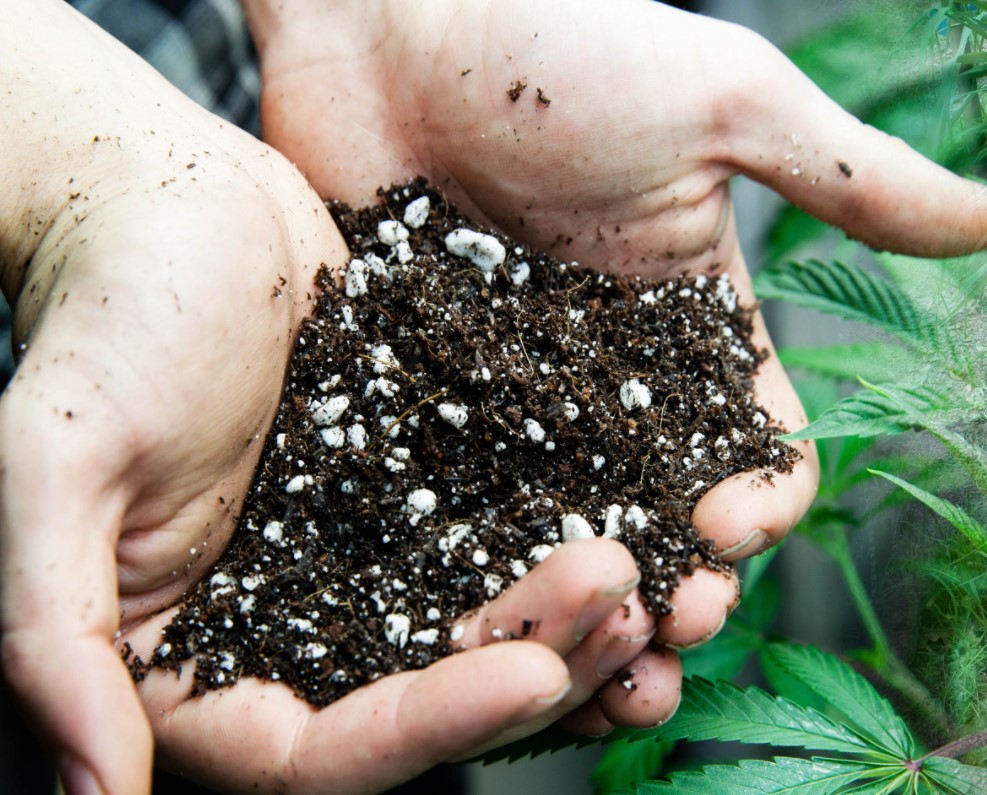
When selecting good soil, you get what you pay for. You will need to spend an extra bit of money and buy a top brand that offers quality. If you’ve ever used cheap soil from a corner garden store, you’ve noticed that its texture has a loose-dirt consistency. These cheap soils have no ability to retain moisture well, and their wicking action is poor at best.
Invest with a well-known company that has good credentials and industry support. Companies such as Biobizz and Foxfarm offer some excellent soil-based products, each supplemented with perlite and peat moss. You’ll want something that has a strong NPK ratio and is jam-packed full of marijuana nutrients.
Coco Coir
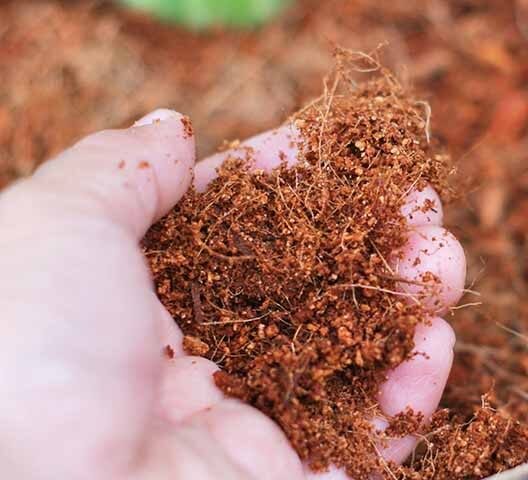
Using coco coir is one of the best mediums you can use as an organic grower. Coco can be mixed into a custom organic mixture or it can be used in hydroponic systems, as it is classed as an inert medium, meaning it contains almost zero micro minerals or trace elements. The coco coir from Canna, however, is supplemented with Trichoderma, a potent biocontrol agent that wards off harmful fungi.
A good tip is to use a mixture of 50 percent coco / 50 percent perlite. Along with this, then you can add a substrate of organic material to provide nutrients for your plants. This will also provide your plants with a sufficient number of air pockets, and the lightness of this mixture is perhaps the softest you can get with a fine blend. Add a mixture of 50 percent worm castings and compost to provide much-needed humates. Growing with coco will encourage your roots, and your cannabis plants, to grow to their maximum potential.
Clay Balls (Grow Rocks)
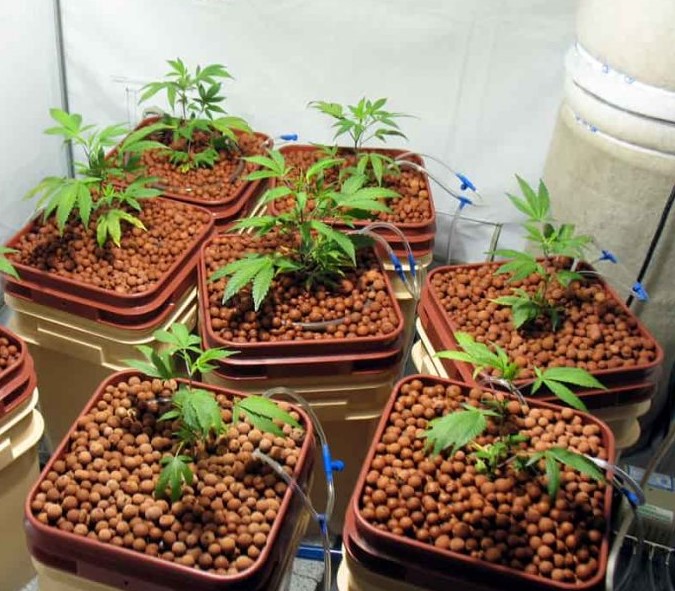
Used in hydroponic systems and inside grow mediums to create air chambers. These simple but effective pebbles are used for commercial gardening and landscaping. Whenever you buy clay pebbles from a grow shop or a garden center, you’ll need to wash them until all the sandy-coloured brown dust is completely gone. You don’t want any dust on them when you’re preparing your hydroponic system.
A good tip is to add a layer of clay balls, at the base of your pots. This will allow extra drainage and ensure that there’s enough fresh air in the root zone of the pots. When you feed, you’ll see water pouring out of the bottom few inches of the clay balls, which causes oxygen to replace the falling liquid through water displacement. Additionally, you can do the same on the top of the medium by using an inch-high layer of clay balls to help prevent algae buildup and to allow nutrients to be evenly dispersed when top feeding.
Rockwool
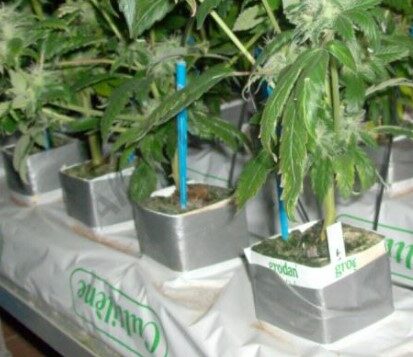
This hydroponic medium has absolutely no nutritional value, which is why nutrients must be supplied in water used in hydroponic growing systems that use Rockwool. Many growers will root clones in Rockwool and then later transport them to another system such as a dripper or nutrient-film-technique (NFT) system. Rockwool isn’t truly organic, and, typically, plants in Rockwool are fed with synthetic nutrients, but since it is possible to feed them organic nutrients, we included it on this list.
When growing with Rockwool, especially in hydro, you can always stack one Rockwool cube on top of another. Of course, this is when working with 4- or 6-inch Rockwool cubes, stacking them up to create 8- or 12-inch cubes of packed-out roots—a great way to get huge yields. As long as the sides of the cubes are covered, the plant can root through the bottom cube and become even larger.
Peat Moss
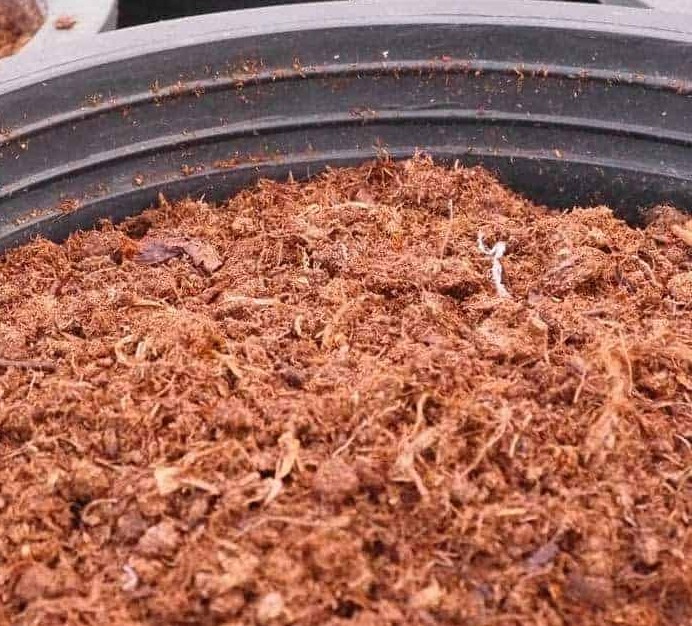
Typically used by commercial farmers and found in bags of growing soil, peat moss is the decomposing organic remains of sphagnum moss. It’s actually a form of natural compost, as it’s in a state of humification, constantly leaching minerals into the grow medium. Peat moss has the ability to hold up to 20 times its own weight in water, so be careful not to overwater your cannabis when using it. It’s great when growing outdoors and on a large scale where the ground may not be as moisture-rich as you might like it to be.
Soil Additives
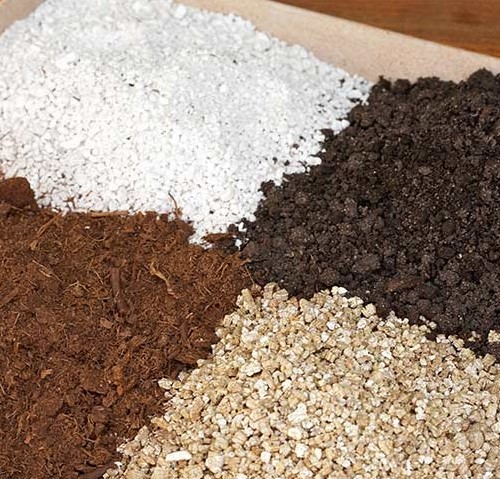
Perlite
Perlite is a small white popcorn-like substance used to create spaces in your grow medium. It also has the ability to retain moisture as well as dry out again. This cheap and simple medium has no nutritional value, so it’s perfect to mix at a 50 percent ratio with soil, worm castings or coco, and some growers have even performed hydroponic marijuana grows using only perlite.
If you are top feeding, cover the top layer of the medium with coco or soil. The reason for this is that algae will begin to grow on the white perlite after using organic nutrients. The perlite will take a dark green colour and the top of the surface will become a slimy dark green. You can deter the algae by simply breaking up the top of the medium.
Vermiculite
Vermiculite holds water so that a dry period won’t happen frequently between feedings. This is useful, but you also want to try for some dry periods when growing. Adding vermiculite to a mixture of soil and perlite provides improved drainage too, but adding too much can keep the medium too wet over longer periods of time. Use it inside of propagator domes to keep moisture levels high when cloning cannabis. If you add a layer of vermiculite to the base of the cloning tray, it will keep the humidity inside nice and high.
Diatomaceous Earth
This product is easily identifiable by its bright chalk-white stone characteristic. Often rebranded as a bug-killing powder, diatomaceous earth is naturally high in silicon, which deters insects that touch it as well as strengthens leaf tissue against insect attacks.
My tip is to break up the white stones and add a layer at the base of your medium container. This will provide excellent drainage as well as allow the roots to grow around the stones. If you mix clay balls with diatomaceous earth, you have the best of both worlds in terms of drainage and silicate availability. Adding a layer of diatomaceous-earth rocks on the surface is also a great way to deter insects and regularly provide silicon with every watering.

The list below shows which additives you should be thinking about adding to your grow medium. Once you’re happy with the overall consistency and feel of the growing medium, you’ll want to add these products in order to supercharge your organic growing medium. Additives also help bring your terpenes and resin production through the roof.
Compost
As its name states, this organic matter is in a constant state of decomposition. As compost breaks down, it releases all its micronutrients into the growing medium. Beneficial bacteria and plant enzymes play an important role in breaking down carbon-rich organic matter, which turns into a dark-brown or blackish colour product.
Add 25 percent of a good compost source into your grow medium along with worm castings to provide a long-term supply of bio-available nutrients that the soil will break down easily.
Bat Guano
This is one of the best additives used in growing cannabis, once you try it, you won’t look back. I often write about how bat guano makes the difference in terms of final flavour, and I can easily tell if a flower has been grown with or without it.
Add around 10 percent bat guano to the final medium mix. Bat guano in the grow medium will complement the microbial colony, making it rich with enzymes, and also enrich the medium with living humates to break down. Different bats produce different NPK ratios depending on their diet so guano from insect-eating bats is best. During flowering, top feed with a 24-hour aerated bat guano compost tea.
Seabird Guano
Seabird poop is perfect to mix in with your bat guano and offers some of the best nutrients for your cannabis plants due to the birds’ diet of fish. Rich in phosphorus and excellent for root systems, this poo provides nitrogen, so it’s certainly a great additive to use during the vegetative stage.
Volcanic Rock Ash
Many grow shops sell different versions of volcanic rock ash. This fine black dust is very beneficial and it’s meant to be worked into the medium to improve drainage, air capacity and capillary action. It’s also teaming with trace elements. Add this powder into your growing medium, focusing on the upper part. This way, new roots can grow into the volcanic dust and benefit from the trace elements early on.
Biochar
This is one of the best additives and it costs literally nothing to make. You simply need to start a wood-based fire. Branches work best, and you want to let the fire burn without allowing the wood to turn completely into ashes. Under a microscope, charcoal has an incredibly intricate crystalline structure, so its ability to hold water is amazing. It’s also a pure source of carbon.
Break the charcoal into small pea-size pieces, then mix it into the grow medium as you’re preparing your final custom mix. Adding biochar will improve the drainage of the growing medium, enhance aeration and keep the beneficial soil bacteria well supplied with carbon.
Try This Organic Mix
Below are the ratios for organic mixes for both indoor and outdoor growing. The indoor and outdoor mixes are different as the outdoor mix is designed for longevity over a 6- to the 7-month period while growing huge plants. Calculate the ratios according to your plant count and pot size. Follow the guidelines and you’ll achieve the ultimate organic soil without a lot of work or money.
Indoor Mix:
- 30% coco
- 40% perlite
- 30% worm castings
- Bat guano
- Seabird guano
- Compost
- Diatomaceous earth
- Liquid Feed:
- Fish mix – Aerated tea
- Ortega/nettles – Aerated tea
- Worm castings – Aerated tea
- Aerated tea—bat guano (flower)
- Unsulphured molasses (entire cycle)
Weekly Top Dressing (Vegetative Stage):
- Worm castings
- Seabird guano
- Diatomaceous earth
- Biochar
Weekly Top Dressing (Flowering Stage):
- Bat guano
- Seabird guano
- Worm castings (weeks 1-3)
Outdoor Mix (Large Plants):
- 20% coco
- 20% perlite
- 40% worm castings
- 20% vermiculite
- Peat moss
- Biochar
- Bat guano
- Seabird guano
- Compost
- Diatomaceous earth
- Volcanic rock ash
Liquid Feeds:
- Fish mix – Aerated tea
- Ortega/nettles – Aerated tea
- Worm castings – Aerated tea
- Aerated tea—bat guano (flower)
- Unsulphured molasses (entire cycle)
Weekly Top Dressings (Vegetative Stage):
- Worm castings
- Seabird guano
- Diatomaceous earth
- Biochar
- Weekly Top Dressing (Flowering Stage):
- Bat guano
- Seabird guano
- Worm castings (weeks 1-3)
All of the above can be sourced from local garden centers, grow shops or the Web. Once you’ve created a blend that is superior in organic quality, you’ll find that your plants will thrive in their new medium and start to think and act like they’re in the fertile ground of Hawaii or Indonesia! You’ll find there’s so much more to organic growing than just buying bottled organic nutrients and dumping them onto your soil.

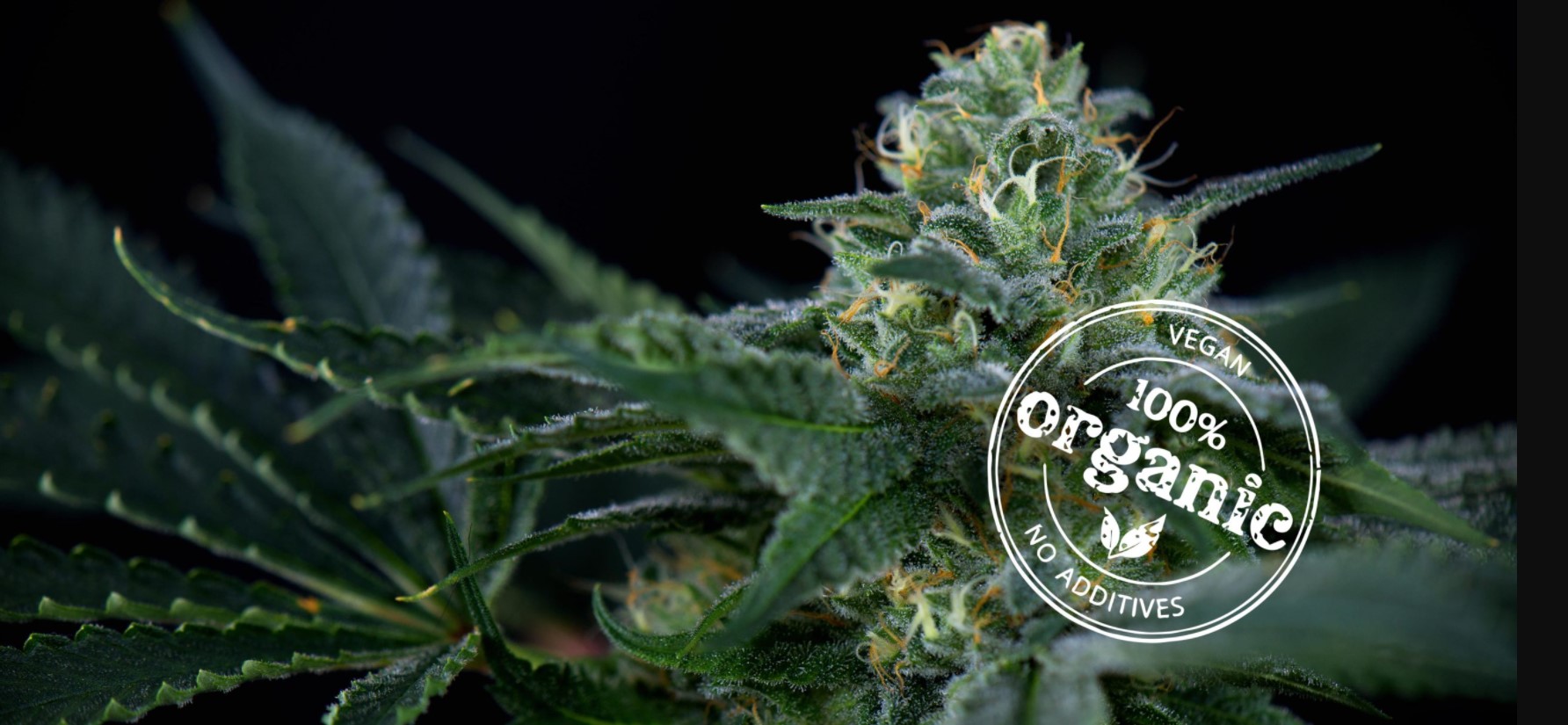
[…] is certainly one of the better ways to enhance autoflower yield. Investing in making good organic nutrients or even a complete living soil will give your plants a natural […]
[…] like with fertilizer and watering, over-pruning can slow your plants down or even kill them. Pruning is done so that […]
[…] stated in the previous posts on marijuana cultivation. You should stop fertilizing and spraying seed oil 2 weeks before harvest. Keep watering your plants and spraying them with […]
[…] stated in the previous posts on marijuana cultivation, you should stop fertilizing and spraying seed oil 2 weeks before harvest. Keep adding water to your pots and mist your […]
[…] is certainly one of the better ways to enhance autoflower yield. Investing in making good organic nutrients or even a complete living soil will give your plants a natural […]
[…] stated in the previous posts on marijuana cultivation, you should stop fertilizing and spraying seed oil 2 weeks before harvest. Keep watering your plants and spraying them with […]
[…] If you are using organic fertilizers… […]
[…] Grow Medium SelectionPlain Soil – This is the typical soil you would see at a local garden center or your backyard.Peat Based Mixture (soilless soil) – A soilless medium is usually made of peat moss and perlite and it is the most popular grow mediums for cannabis. […]